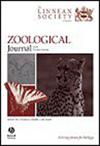渡渡鸟和接龙(鸟类:鸽科)的系统学和命名法,以及鸽科群命名法概览
IF 3
2区 生物学
Q1 ZOOLOGY
引用次数: 0
摘要
渡渡鸟及其已灭绝的姊妹物种 "接龙 "是人类破坏能力的典型代表。在与人类首次相遇后的一个世纪内,这些第二陆栖褐腹鸟类就灭绝了。由于它们的迅速灭绝,自然历史收藏中几乎没有它们的资料,因此 18 世纪和 19 世纪早期的一些博物学家认为这些反常的鸟类是神话传说。这就意味着,确定这些鸟类科学名称的命名法出版物都是基于物种灭绝前的描述。因此,渡渡鸟和接龙鸟都没有指定模式标本。我们对这两个物种和相关科群的名称进行了深入的历史回顾,发现以渡渡鸟为基础的科群的名称权威性与文献报道不符。此外,我们对基于胭脂鱼属的科群命名的详细审查确保了当前胭脂鱼科群系统化的有效性。19 世纪至 20 世纪命名规范的变化对渡渡鸟的命名产生了深远的影响;以至于渡渡鸟成为命名 "涟漪 "如何无处不在的一个范例,并为我们当前的多重命名规范世界敲响了警钟。本文章由计算机程序翻译,如有差异,请以英文原文为准。
The systematics and nomenclature of the Dodo and the Solitaire (Aves: Columbidae), and an overview of columbid family-group nomina
The Dodo and its extinct sister species, the Solitaire, are iconic exemplars of the destructive capabilities of humanity. These secondarily terrestrial columbids became extinct within a century of their first encounter with humanity. Their rapid extinction, with little material retained in natural history collections, led 18th and some early 19th century naturalists to believe that these aberrant birds were mythological. This meant that the nomenclatural publications in which their scientific nomina were established were based on accounts written before the species became extinct. As such, no type specimens were designated for either the Dodo or the Solitaire. Our in-depth historical overview of both species and associated family-group nomina found that the nominal authority of the Dodo-based family group is not what is reported in the literature. Moreover, our detailed review of the family-group nomina based on columbid genera ensures that the current columbid family-group systematization is valid. Changing nomenclatural norms between the 19th and 20th centuries had a profound impact on Dodo nomenclature; so much so that the Dodo is an example of how pervasive nomenclatural ‘ripples’ can be and a warning for our current world of multiple nomenclatural codes.
求助全文
通过发布文献求助,成功后即可免费获取论文全文。
去求助
来源期刊
CiteScore
6.50
自引率
10.70%
发文量
116
审稿时长
6-12 weeks
期刊介绍:
The Zoological Journal of the Linnean Society publishes papers on systematic and evolutionary zoology and comparative, functional and other studies where relevant to these areas. Studies of extinct as well as living animals are included. Reviews are also published; these may be invited by the Editorial Board, but uninvited reviews may also be considered. The Zoological Journal also has a wide circulation amongst zoologists and although narrowly specialized papers are not excluded, potential authors should bear that readership in mind.

 求助内容:
求助内容: 应助结果提醒方式:
应助结果提醒方式:


